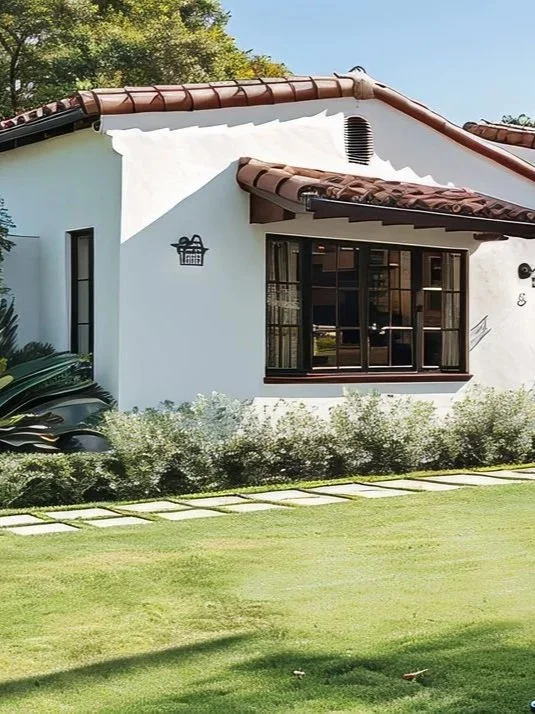
Could the Mills Act Be a Smart Move for Your Property?
A Smart Strategy for Homeowners and STR Operators in San Diego
If you own a historic home in San Diego or operate a short‑term rental with architectural character, the Mills Act is a powerful tool for preservation and tax savings.
This California program offers substantial property tax relief often between 40 and 70 percent per year in exchange for maintaining and restoring historic homes to approved standards. But the impact goes beyond just the financial benefit.
For many property owners, the Mills Act creates space in the budget to invest in meaningful work: restoring original details, making long-lasting upgrades, and honoring what makes the home special.
Why It’s Worth Considering
For homeowners: The Mills Act funds craftsmanship and preservation without compromising financial flexibility. It supports durability while protecting neighborhood character.
For STR operators: Although it does not permit modern renovations, it does allow for thoughtful improvements like restored bathrooms, original plaster finishes, period-appropriate trim which enhance guest experience and listing credibility.
In both cases, you are aligning with what local officials want: quality preservation over short-term fixes.
Top 5 Criteria the Mills Act Prioritizes
1. Preservation of Character-Defining Features
The city wants to see that you're maintaining or restoring original features that contribute to the building’s historic value. This includes:
Exterior walls and cladding (e.g., original stucco, wood siding, stone)
Doors and windows (including casings, divided lites, wood sashes)
Porches, balconies, railings, and trim
Roof form and materials
These elements should not be replaced with modern substitutes or concealed by new finishes.
2. Reversibility and Compatibility of Work
Any new work must be reversible and compatible with the original structure. That means:
Additions should be distinguishable yet sympathetic in scale and materials
Modern improvements (e.g., HVAC or solar) must be discreetly placed and not dominate the historic appearance
Repairs must match original construction in look and technique
The goal is for improvements to support, not overwrite, the original architecture.
3. Use of Appropriate Materials and Techniques
Cities look closely at what materials you propose to use. They want to see:
Traditional stucco or lime plaster, not acrylic-based systems
Wood window restoration over vinyl replacement
Clay tile or shingle roofing that matches original materials
Limewash or mineral paint finishes instead of latex over masonry
Original materials should be preserved when possible. When replacement is necessary, it must match in kind.
4. Evidence of Proper Maintenance or Active Restoration
Mills Act participants must show ongoing stewardship. This includes:
Regular repair of wood trim, stucco cracks, and drainage issues
Active rehabilitation of deteriorated architectural elements
Avoidance of neglect or deferred maintenance (which can void a Mills Act contract)
A well-maintained appearance reflects a real commitment to preservation.
5. Alignment with the Secretary of the Interior’s Standards
Every Mills Act application is reviewed against the 10 federal standards, which emphasize:
Minimal alteration of historic features
Repair over replacement
Documentation of changes
Preservation of historic materials, craftsmanship, and context
Adherence to these standards is a condition of contract approval and renewal.
Who Qualifies for the Mills Act
In San Diego County, you generally qualify if:
Your property is officially designated historic by the San Diego Historical Resources Board or within a recognized historic district.
Your property is maintained or being rehabilitated according to the Secretary of the Interior's Standards for Rehabilitation.
Participating cities in San Diego County include San Diego, Coronado, Chula Vista, Escondido, La Mesa, National City, and unincorporated areas through the County’s program.
The city of San Diego accepts Mills Act applications each year from January through March. Details and deadlines are published on the city’s official Mills Act program page.
How to Apply
Check your property’s designation status with the local planning department or historic resources board.
Prepare documentation including designation records, historic photos, and a proposed restoration plan.
Submit your application during the official window. San Diego’s review period begins January 1 and ends March 31.
If approved, sign a ten-year renewable Mills Act contract committing to preservation standards.
How Upwell Helps
The Mills Act is rooted in historic integrity, not design trends. Our work focuses on preserving original materials—and enhancing your home’s livability in thoughtful ways.
At Upwell Builders, we support clients applying for Mills Act agreements and those already under contract. We skillfully balance regulatory requirements with modern needs such as comfort, efficiency, and guest usability.
What We Offer:
Traditional exterior finishes like lime plaster, limewash, and hand-troweled stucco that reflect the building’s original construction
Repairs to key structural and visible elements such as foundations, wall systems, historic roofing, and original wood or steel windows
Interior improvements that maintain the home’s texture and character, including mineral-based paints, floor refinishing, and period tile repair
Project planning and documentation that supports Mills Act requirements and aligns with preservation standards
Coordination with historic consultants, architects, or city reviewers when needed to move projects forward with clarity and confidence
Whether you are maintaining a Spanish Revival home in La Jolla or restoring a Mission-style duplex in La Mesa, we help you complete the work properly. Our approach supports the architecture, meets the city's expectations, and respects the long-term value of your home.
Thinking About a Mills Act Project?
If you are planning a Mills Act application or already have an agreement, we can help determine suitable upgrades while preserving historic character. Let’s walk your property together and scope improvements that align with your goals and the city’s guidelines.
Helpful Resources:
Contact Us
Reach out to:
Schedule a free project consultation
Learn more about our build system or custom services
Discuss timelines, permitting, or budget expectations
Ask questions big or small
Once we receive your message, someone from our team will follow up within 24 hours to learn more about your goals and how we can help.
